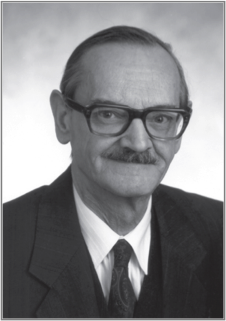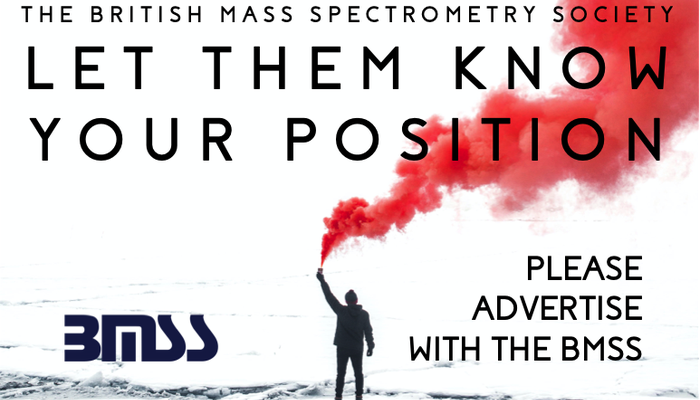B. N. Green Prize
The BMSS awards the B. N. Green Prize, in honour of Brian N. Green, to the best early career scientist's flash oral presentation.
Brian N. Green
Awarded the Aston Medal in 1996

Brian Noel Green was awarded the Aston Medal in 1996. He was born on Christmas Day, 1933, in Urmston on the western fringes of Manchester. His father was a draughtsman at Metropolitan Vickers (MV), and had converted the living room into a workshop where he repaired radios in his spare time. Thus, Brian developed an early interest in electronics.
Brian studied at Manchester Grammar School and then Manchester University, from where he graduated in 1955. After two years apprenticeship at MV, he joined the research group under John Waldron, which was developing mass spectrometers. An early recollection was of John Beynon and the MV group obtaining a 'typical' spectrum of the CO/N2/C2H4 triplet between flashovers on the MS8 - the forerunner to the MS9. John Waldron was believed to have stated that the guarantee on the MS8 would be null and void if any organic chemicals were introduced into it.
Brian's first project was to develop a residual gas analyser based on a 2-inch radius, 180° permanent magnet (MS10). He then spent some time working on the production version of the double-focusing spark-source instrument (MS7), and in 1961 he installed one of these at the RCA labs in Princeton, NJ. This was the first mass spectrometer that AEI exported to the USA (MV became AEI in 1960).
In 1962, Brian joined the team developing AEI’s 12-inch radius high-resolution double-focusing instrument, the MS9. As the only method of recording spectra was on photographic paper charts, exact mass measurement was undertaken by peak matching; a very time-consuming procedure. In 1964, Biemann described a method of recording and automatically mass-measuring whole spectra acquired on a photo-plate using a focal plane instrument, and this led AEI to develop a method for electrically recording and mass measuring entire 10,000 resolution spectra at 10 seconds/decade in mass with 10ppm mass accuracy. Using an MS9 installed at Yale in early 1965, Brian showed that digitised data from analogue signals could be accurately mass measured. AEI’s three papers at the ASMS meeting in 1965 set the basis for the data system processing of mass spectra as computers and digitisers developed.
After an excursion into ESCA with Mickey Barber, Brian left AEI in 1972 to join VG Micromass (MM), where he became technical manager with responsibility for the design, development and application of single- and double-focusing mass spectrometers for organic analysis. He was directly involved in the design and development, in 1973, of the first double-focusing instrument made by VG: the 6-inch radius magnetic sector MM 7070, of which 500 were manufactured.
In 1974, Brian became involved with the design and development of the MM ZAB (Zero Alpha Beta aberrations), a 12-inch radius double-focusing reverse-geometry magnetic sector instrument, designed to a performance specification proposed by John Beynon (Swansea) in order to undertake MIKES (mass-analysed ion kinetic energy) experiments. Brian also did the design work for the development of fully laminated magnets using grain-oriented 0.3 mm steel strip. This innovation considerably increased the scanning speed of magnetic sector instruments, reduced hysteresis, stray fields and defocusing effects, and gave a 20% increase in the mass range over previous solid-core magnets.
Following the 1980 invention of fast-atom bombardment (FAB) ionisation by Mickey Barber’s group at UMIST, the mass range of labile organic compounds directly accessible to analysis by MS increased dramatically. Brian worked closely with them on the early applications of FAB, and developed extended mass range instruments that were capable of taking advantage of the new ionisation technique. The analysis of intact insulin (1982) spawned an interest in protein analysis that has remained with Brian until the present.
The application of MS in dioxin analysis stimulated the development of specifically tailored instrumental control and processing software. Since the dioxin method used GC/MS with helium as the carrier gas, a simple inventive step, not published at the time (1985), was the development of an EI source that operated near to the ionisation energy of helium. This significantly reduced the presence of helium ions, and substantially increased the sensitivity. Derivatives of the MM 7070 developed during this period are still considered to be the gold standard for dioxin determination. Also in 1985, he was awarded an OBE for contributions to mass spectrometry.
In 1988 Brian led the development of an electrospray ionisation (ESI) source for the existing quadrupole instrument with the first instrument being delivered in 1990. In addition to bringing MS to the life, pharmaceutical and clinical sciences, ESI also extended the mass range of molecules that could be analysed by MS, up to at least 500kDa molecular weight. Brian's most cited collaborative paper (1992) is on the application of Maximum Entropy algorithms to the disentanglement of electrospray multiply charged data in order to generate spectra on a true mass scale.
Brian is a named author on more than 140 scientific publications (110 since 1990), the majority of which have been written in collaboration with academic and industrial partners.
Since the mid-90s, Brian has focused on the application of mass spectrometry to the analysis of proteins, particularly haemoglobin and related molecules. He has developed protocols for the rapid identification of variants in human haemoglobin by mass spectrometry, and has identified about 220 different variants including 35 not previously reported.
Shortly before his death on the 17th December 2021 Brian published “The Analysis of Human Haemoglobin Variants Using Mass Spectrometry”. A copy of this book can be downloaded at https://www.waters.com/waters/library.htm?lid=135092698

